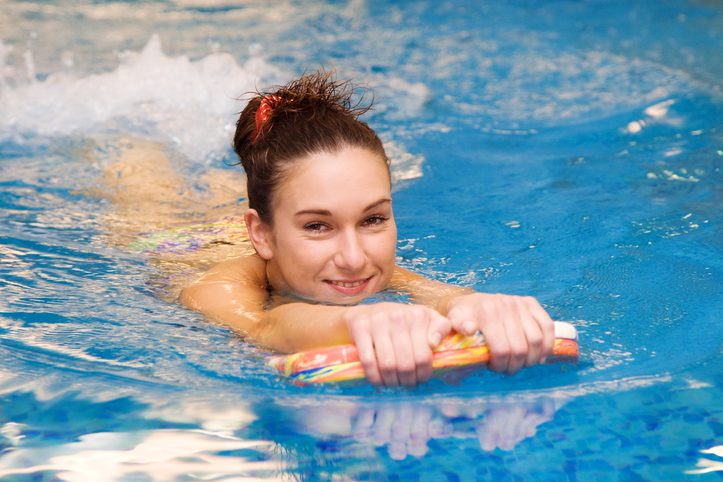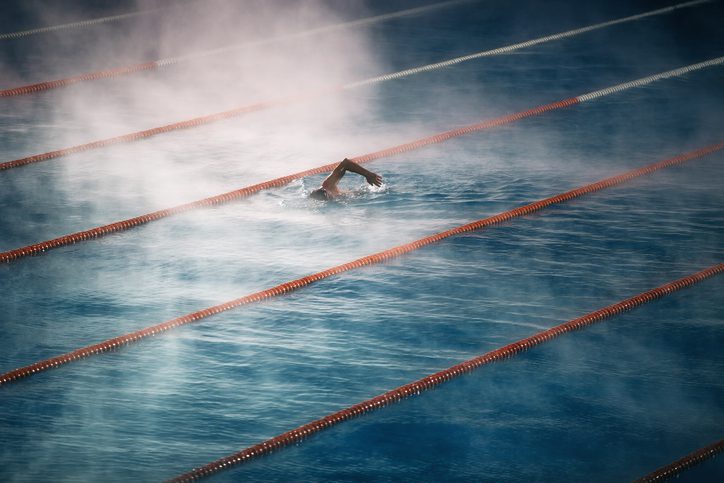The 5 do’s and don’ts of becoming a faster swimmer
5 x 5 - things to do, and not to do to improve your triathlon swim times

How’s this for a 5 x 5? No, it’s not a workout, but rather a quick and easy list of five things to do to be a faster triathlon swimmer, along with five things to avoid:
DO swim more.
The single biggest correlation between speed and a training variable is volume. The best way to increase volume is to increase frequency. Swimming five times a week for one hour is better than swimming three times a week for an hour and forty minutes
DON’T worry about the other strokes.
Mastering breast stoke will make you a better free styler. Mastering any movement in water will make you a better free styler. But, the returns on the effort diminishes to the point of obscurity. You still have to bike, run, work, have a social life, eat and rest. Don’t waste time on other swim strokes. Having said that, a little back stroke as part of your warm-up, recovery and cool down is never a bad idea.
DO swim with a coached group.
Seasoned swimmers will find it easier to maintain fitness in the pool than newer swimmers, but even the most experienced often find it challenging to gain fitness on their own. Nothing beats chasing and being chased. And having a knowledgeable coach stalking the decks with a keen eye will make finding those seconds so much easier.
Related: Swim training – master your breathing

If your name is Katie Zaferes and you can swim around nine minutes for 750 meters in open water, chances are you probably don’t need to focus too much on high intensity kick sets in your sessions. As you move further away from that fantasy and closer to your own reality, though, you will need to increase your efforts to develop a strong kick. It’s estimated that kicking provides seven per cent more propulsion to your freestyle. So why work on it? Because you have to get out of the water and bike and run. The stronger your kick, the less fatigue you’ll have in your legs when you finished the swim leg. Also, if you’re a newer swimmer, there’s an excellent chance your hips sink in the water. A strong kick will make all the difference in your body position and, while that kick may not directly increase your speed, lifting your hips up will.
DO utilize underwater video assistance.
Most people are visual learners. What we think we’re doing in the water is often not the case. Once you lay your eyes on that dropped elbow or sinking hips making the necessary changes are easier. A phone in a waterproof case is a low budget way to achieve this.
DON’T worry about drills (except band only).
Fitness will win every time. I heard about a young German swimmer improving by doing drills but I have yet to confirm this. (tongue firmly in cheek). Work on your FPS – Focused Perfect Stroke.
DO learn how to master a set.
Don’t be afraid to repeat sets with some frequency. Boring training makes good athletes and variety is only a spice for the weak minded. Beating a set isn’t just about fitness – it’s also about smarts.
Related: Paddle drills with Cody Beals

DON’T be afraid to suffer.
If you want to swim faster – then swim faster. Bring up your cadence (a tempo trainer is a good way to do this). Fight for every second and stop looking for the big magical gains. If you averaged 1:38s @ 1:55 for your hundreds last week then go for 37s or try to hold those 38s on 1:50. For. Every. Second.
DO drag stuff.
If it makes you feel better, call it a drill but dragging a parachute, bucket, towel or sponge is an excellent way to gain strength AND highlight the dead spots in your stroke. It’s like driving with the breaks on in your car – as soon as you let up on the gas, you slow right down. Figure out how to fill those gaps – and don’t be afraid to add some paddles to add some strength!
DON’T lose sight of the forest for the trees.
Swimming is a technical sport and certainly the most technical of the three sports we’re involved in. There’s a laundry list of things to think about; the extension, entrance, high elbow, aggressive catch, core connection, rotation, breathing etc, etc. But sometimes I see swimmers getting so caught up in all these details that they forget the simple truth that we’re not trying to pull our arms through the water, we’re trying to pull our bodies through the water as quickly and efficiently as possible. Have a flat boat and strong propeller – then let it flow.
Clint Lien is the head coach of Victoria’s Mercury Rising Triathlon www.mercuryrisingtriathlon.com and the assistant coach for the
Canadian National Academy Triathlon Team.
